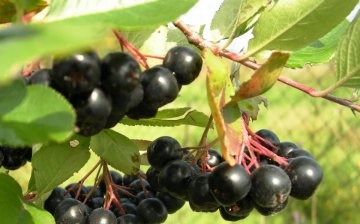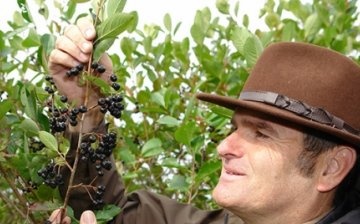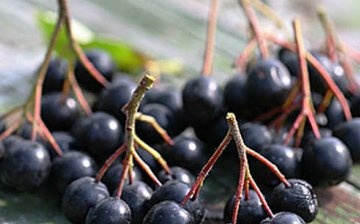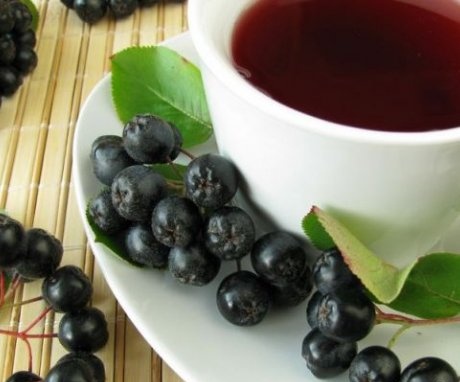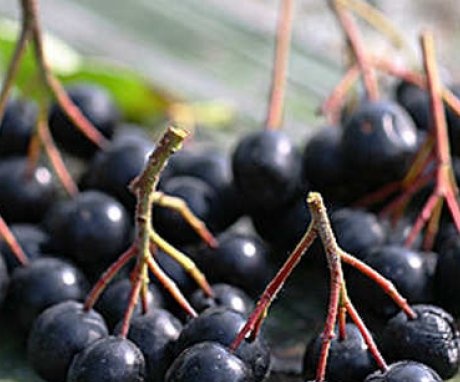Useful properties of chokeberry and how to grow it in your garden
Chokeberry is often grown as an ornamental plant. But not everyone knows how useful its fruits are for the body.
Content:
- Chokeberry: description of the plant, variety
- Useful properties of chokeberry
- How to care for chokeberry
- Growing and planting chokeberry
Chokeberry: description of the plant, variety of varieties
Chokeberry (black) mountain ash or chokeberry came to us from America, but it gets along well and bears fruit in the climate of the CIS countries. It is resistant to frost and drought, unpretentious to soil and maintenance. IV Michurin managed to create a variety that could get along in our conditions, and the variety "Michurin's aronia" was named in his honor.
In North America, you can find Michurin's chokeberry and wild varieties that grow as weeds. They stretch along the shores of lakes and rivers, interbreed with other types of mountain ash and other crops.
Rowan description:
- Aronia in height is located between a shrub and a tree, its average height is 2 meters.
- The berries are sweet, tart, black and bluish, with an average diameter of 12 mm.
- Grow chokeberry as a fruit and medicinal crop, it can be found in private and specialized farms.
- Chokeberry has oblong oval leaves.
- Until the plant blooms and bears fruit can be confused with cherries.
- In the fall, foliage can be of different colors: orange, red, purple. Shrub flowers are snow-white, have a pleasant pronounced aroma, collected in corymbose plants.
Harvesting is done just before frost. You can dry the crop outdoors and in dryers at a temperature of 60 degrees, dry fruits are stored for up to 2 years. For storage of fruits, boxes or paper bags are used.
Leaves are also harvested for brewing tea. They are harvested immediately after flowering, they can be dried along with the fruits.
You can keep the berries fresh. They break off along with the stalks and leaves and go to a dark place, the temperature in which is kept below zero degrees. In this state, they can lie for a year without losing their taste and useful properties.
there is many varieties of chokeberry, they are all very similar in appearance, they can only be distinguished by taste and timing of fruiting. New varieties are bred to improve the quality of berries and increase yield, disease resistance.
The following varieties are common:
- Danish variety Aron
- Finnish varieties Belder, Hakkia, Karkhumaki, Viking
- Polish varieties Egert, Dabrowice, Kutno, Nova weight
- Varieties of mixed origin Ruby, Nero, Black-eyed, Erekta
It is best to check with your local nursery to select a variety to grow in your garden.
Useful properties of chokeberry
Due to its unique composition, chokeberry can be used as a medicinal culture. By eating it, you can get a large amount of vitamins and minerals. But mountain ash also has a number of contraindications.
Each berry contains beta-carotene and vitamins of the following groups: B1, B2, B6, K, E, C, P.
The composition of chokeberry contains tannins and pectin substances, a large amount of sugar: glucose, fructose, sucrose, as well as micro- and macroelements, namely: molybdenum, fluorine, copper, iron, manganese, boron. The berries contain the maximum amount of calcium.
By the useful properties of black mountain ash stands in front of black currants, apples and oranges. In terms of iodine content, chokeberry is ahead of raspberries, strawberries and gooseberries.
Biologically active substances have healing properties. Chokeberry is used for the following diseases:
- Anacid gastritis
- Vascular diseases
- Eczema
- Measles
- Allergic vasculitis
- Capillarotoxicosis
- Atherosclerosis
- Hypertonic disease
The substances contained in chokeberry make the walls of blood vessels more elastic, resilient, and therefore strong. Pectin substances are able to remove heavy metals and harmful microorganisms from the body. They also help restore bowel function, have a choleretic effect and fight spasms.
An important property of black mountain ash is its ability to normalize blood pressure and lower blood cholesterol levels. Aronia helps with blood clotting disorders and diabetes mellitus.
If you constantly eat black rowan berries in acceptable quantities, you can strengthen the immune system and improve the functioning of the endocrine system.
You can gradually get rid of thyroid diseases. It has been empirically proven that berries have a positive effect on the functioning of the liver, cleaning it and normalizing the main functions. Traditional medicine uses recipes with chokeberry for diseases of the genitourinary system as a diuretic. Berries help fight kidney disease.
The main properties of chokeberry:
- Diuretic
- Choleretic
- Increasing appetite
- Hematopoietic
- Stopping bleeding
- Antispasmodic
- Vasodilator
These properties can be used to treat a wide variety of diseases. But berries are not as safe as it might seem at first glance. It is forbidden to eat them with low blood pressure, acute gastritis, stomach and duodenal ulcers, increased acidity of gastric juice and increased blood clotting.
You can prepare a medicinal broth according to the following recipe: 20 gr. berries pour a glass of boiling water, drink 3 times a day, 0.5 cups.
How to care for chokeberry
Chokeberry is a valuable crop, so many gardeners practice its cultivation in their garden. Aronia gives a high yield, it is easy to grow and propagate it. The fruits ripen quickly, they are easy to pick, and after harvesting they are stored for a long time.
Rowan, like any other fruit tree, can get sick, but most varieties are highly resistant to parasites and diseases.
Chokeberry has a lot of useful properties, the fruits are eaten directly from the tree, they can be used to prepare compotes, juices, preserves and even food colors. Aronia has a higher taste after defrosting.
Growing conditions:
- Most of all the requirements of aronia are imposed on moisture. The best places are those on the site where groundwater passes nearby. If apple and pear trees have not taken root on the site, then most likely this place is suitable for mountain ash.
- The soil should not be heavy, this can lead to a decrease in the number of buds.
- The berries will ripen better in the sun, so the branches should not be in the shade of other taller trees.
- After landing the first harvest will appear in three years. Shoots form very quickly, so by the third year of life the shrub will be quite branched. The peak yield occurs from the 5th to the 8th years of life; an average of 10 kg of berries can be harvested from one specimen.
- Mountain ash is not particularly whimsical to the soil. If possible, choose an area with neutral or slightly acidic soil.If these conditions are not met, then it would be advisable to hold special events. Wood ash or lime is added to the acidic soil. The root system of the chokeberry is deep, it goes 3 meters deep into the soil, although the bulk of the roots lies at a distance of 50-60 cm.
- So that the shrub does not waste all its strength and nutrients on small shoots, pruning is done annually. You need to leave no more than 5 of the most viable shoots. Each must be at least 4 years old. After 7 years, the old branches are cut off, replacing them with younger ones, thus the plant rejuvenates and can bear fruit for an unlimited amount of time.
- Pollination occurs naturally, pollen is spread by insects and wind.
Growing and planting chokeberry
If there is already a chokeberry bush on the site, then it can be propagated in the following ways:
- Cuttings
- Layers
- Parts of a bush
- Root offspring
If there are only chokeberry seeds, then seedlings can be obtained from them, having previously carried out some manipulations. The seeds can be bought at the store, or you can get them yourself from the berries. The first 3-4 months, the seeds need stratification.
Rowan seeds are cleared of pulp, each berry will contain about 6 seeds.
The seeds are washed and wrapped in gauze or a woven bag. All this for a day fits into a container with water, which will need to be changed periodically. After that, the seeds are transferred to a box with sawdust. In this state, they should lie for at least a week. And at the end, the seeds are transferred to the refrigerator, to a compartment with a temperature of 5 degrees Celsius. A basement is also suitable for this purpose. In the coolness, the seeds should lie for 3-4 months.
Before sowing, the seeds should lie warm for several days. For sowing, a soil is prepared, which includes:
- Sand
- Earth
- Humus
- Sawdust
The seeds go deep into the box to a depth of 7 cm. When the first seedlings break through, they are transplanted at a distance of several centimeters from each other. They are seated even further when 4-5 leaves appear.
Seedlings grow slowly. The third time they are thinned out only the next year, observing the distance between the seedlings of 10 cm. The seedlings can be transplanted to a permanent place in the autumn of the second year. A distance of at least 2-3 meters is maintained between each shrub. Preparation for planting chokeberry is similar to other fruit crops.
When transplanting to a permanent place, a planting pit is prepared with a depth and width of 40-50 cm. A bucket of humus and 70 grams are introduced into the pit. superphosphate.
In order for the shrub to actively grow and develop, the following activities are carried out:
- Tillage
- Loosening the soil
- Fertilization
- Pruning
- Prevention and control of pests
The most common pests of black chokeberry are aphids and slimy cherry sawfly, winter moth and fruit moth. Growing chokeberry will not be difficult, even for a beginner. And its beneficial properties will be effective in many diseases and simply to maintain immunity.
More information can be found in the video.



